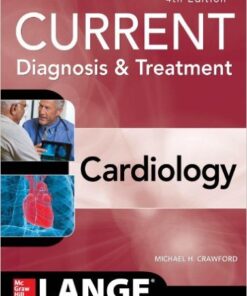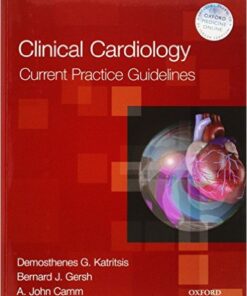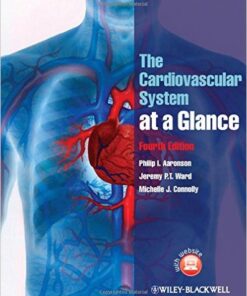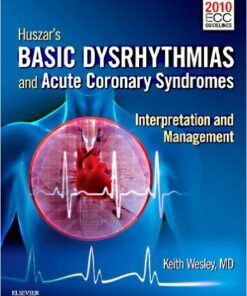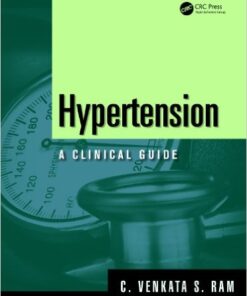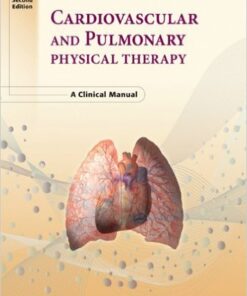CARDIOLOGY BOOKS
CARDIOLOGY BOOKS
CARDIOLOGY BOOKS
CARDIOLOGY BOOKS
CARDIOLOGY BOOKS
CARDIOLOGY BOOKS
CARDIOLOGY BOOKS
CARDIOLOGY BOOKS
CARDIOLOGY BOOKS
CARDIOLOGY BOOKS
CARDIOLOGY BOOKS
CARDIOLOGY BOOKS
CARDIOLOGY BOOKS
CARDIOLOGY BOOKS
CARDIOLOGY BOOKS
CARDIOLOGY BOOKS
CARDIOLOGY BOOKS
CARDIOLOGY BOOKS
CARDIOLOGY BOOKS
CARDIOLOGY BOOKS
CARDIOLOGY BOOKS
Cardiac Electrophysiology: From Cell to Bedside, 6th Edition
Introduction
Are you looking to enhance your knowledge of cardiology? Look no further! Discover the Best Cardiology Books to Enhance Your Knowledge is here to provide you with a comprehensive list of the top books on cardiology. From textbooks to reference guides, this selection of books will help you gain a better understanding of the field and stay up-to-date on the latest developments in cardiology. Whether you are a student, a medical professional, or just someone interested in learning more about cardiology, these books will provide you with the information you need.
Overview of Cardiology: A Comprehensive Guide to the Basics
Cardiology: A Comprehensive Guide to the Basics is an essential resource for anyone interested in learning more about the field of cardiology. This comprehensive guide provides a thorough overview of the fundamentals of cardiology, from basic anatomy and physiology to advanced topics such as cardiac imaging and electrophysiology. It covers all aspects of the diagnosis and treatment of cardiovascular diseases, including coronary artery disease, arrhythmias, heart failure, and congenital heart defects.
The book begins with an introduction to the anatomy and physiology of the heart, including its structure, function, and electrical conduction system. It then moves on to discuss the various types of cardiovascular diseases, their causes, symptoms, and treatments. The book also covers the use of diagnostic tests such as electrocardiograms, echocardiograms, and stress tests, as well as the role of lifestyle modifications in preventing and managing cardiovascular diseases.
In addition to providing an overview of the basics of cardiology, this book also includes detailed information on specific topics such as interventional cardiology, cardiac rehabilitation, and cardiac surgery. It also discusses the latest advances in the field, including minimally invasive procedures, stem cell therapy, and gene therapy.
This comprehensive guide is written in an easy-to-understand style and is suitable for both medical professionals and lay readers. It is an invaluable resource for anyone looking to gain a better understanding of the field of cardiology and its related topics.
The Latest Advances in Cardiovascular Disease Diagnosis and Treatment
Cardiovascular disease (CVD) is a major cause of death and disability worldwide. It is estimated that 17.9 million people died from CVD in 2016, representing 31% of all global deaths. As such, the diagnosis and treatment of CVD has become an increasingly important area of research and development. In recent years, there have been significant advances in the diagnosis and treatment of CVD, which have improved patient outcomes and quality of life.
The diagnosis of CVD has traditionally relied on physical examination, imaging techniques such as echocardiography and CT scans, and laboratory tests such as blood tests. However, more recently, new technologies have been developed to improve the accuracy and speed of diagnosis. For example, cardiac magnetic resonance imaging (MRI) can provide detailed images of the heart and its structures, allowing for more accurate diagnosis of CVD. Additionally, biomarkers such as high-sensitivity troponin and natriuretic peptides can be used to detect early signs of CVD, allowing for earlier intervention and better patient outcomes.
In terms of treatment, there have been significant advances in the past few decades. Medications such as statins, ACE inhibitors, and beta blockers are now commonly used to reduce the risk of CVD. Additionally, lifestyle modifications such as smoking cessation, weight loss, and exercise can help reduce the risk of CVD. Surgery is also an option for some patients, with procedures such as coronary artery bypass grafting and percutaneous coronary intervention becoming increasingly common.
Finally, there have been advances in the use of technology to treat CVD. For example, implantable cardioverter defibrillators (ICDs) can be used to detect and treat abnormal heart rhythms, while pacemakers can be used to regulate heart rate. Additionally, catheter-based treatments such as angioplasty and stenting can be used to open blocked arteries and improve blood flow.
Overall, there have been significant advances in the diagnosis and treatment of CVD in recent years. These advances have improved patient outcomes and quality of life, and will continue to do so in the future.
Understanding Cardiac Anatomy and Physiology
Cardiac anatomy and physiology is the study of the structure and function of the heart. It is a complex field that requires an understanding of both the physical and chemical aspects of the heart. The heart is a muscular organ that pumps blood throughout the body, providing oxygen and nutrients to all of the organs and tissues.
The heart is divided into four chambers: the right atrium, left atrium, right ventricle, and left ventricle. The right atrium receives deoxygenated blood from the body and sends it to the right ventricle. The right ventricle then pumps the blood to the lungs where it is oxygenated. The oxygenated blood returns to the left atrium and is sent to the left ventricle. The left ventricle then pumps the oxygenated blood out to the rest of the body.
The heart also contains four valves that control the flow of blood through the chambers. The tricuspid valve is located between the right atrium and right ventricle, while the mitral valve is located between the left atrium and left ventricle. The pulmonary valve is located between the right ventricle and the lungs, and the aortic valve is located between the left ventricle and the aorta.
The heart also has its own electrical system that controls the rate and rhythm of the heartbeat. This system consists of the sinoatrial node (SA node), the atrioventricular node (AV node), and the Purkinje fibers. The SA node is located in the right atrium and is responsible for initiating the electrical impulse that causes the heart to beat. The AV node is located in the center of the heart and slows down the electrical impulse before it reaches the ventricles. The Purkinje fibers are located in the walls of the ventricles and spread the electrical impulse throughout the ventricles, causing them to contract and pump blood.
Understanding cardiac anatomy and physiology is essential for medical professionals who work with patients with heart conditions. By understanding the structure and function of the heart, they can diagnose and treat various heart conditions. They can also provide advice on lifestyle changes that can help improve heart health.
Exploring the Role of Genetics in Cardiovascular Health
Cardiovascular health is an important factor in overall health and wellbeing. Genetics plays a significant role in determining one’s risk for developing cardiovascular disease, as well as the severity of the condition. Exploring the role of genetics in cardiovascular health can help us better understand how to prevent and treat this common and potentially life-threatening condition.
Genetic factors are responsible for many of the risk factors associated with cardiovascular disease, such as high blood pressure, high cholesterol, and obesity. These conditions can be inherited from parents or passed down through generations. Additionally, certain genetic mutations can increase the risk of developing cardiovascular disease. For example, mutations in the genes that control cholesterol levels can lead to higher levels of LDL (bad) cholesterol, which can increase the risk of heart attack and stroke.
In addition to genetic factors, lifestyle choices can also play a role in cardiovascular health. Smoking, poor diet, and lack of physical activity can all contribute to an increased risk of developing cardiovascular disease. However, even if someone has a genetic predisposition to cardiovascular disease, making healthy lifestyle choices can reduce their risk.
Exploring the role of genetics in cardiovascular health can help us better understand how to prevent and treat this condition. Knowing which genetic mutations may increase the risk of cardiovascular disease can help doctors identify those at higher risk and provide them with appropriate preventive care. Additionally, understanding the role of lifestyle choices can help individuals make informed decisions about their health and reduce their risk of developing cardiovascular disease.
Strategies for Improving Cardiovascular Health and Wellness
Cardiovascular health and wellness is an important part of overall health and wellbeing. It is essential to maintain a healthy lifestyle in order to reduce the risk of developing cardiovascular diseases such as heart attack, stroke, and other related conditions. There are several strategies that can be used to improve cardiovascular health and wellness.
The first strategy is to engage in regular physical activity. Exercise helps to strengthen the heart muscle, improve circulation, and reduce the risk of developing cardiovascular diseases. Aim for at least 30 minutes of moderate-intensity physical activity on most days of the week. This could include walking, jogging, swimming, cycling, or any other form of aerobic exercise. Strength training is also beneficial for improving cardiovascular health and should be incorporated into your routine.
Another strategy is to eat a healthy diet. Eating a balanced diet that is low in saturated fat, trans fat, and cholesterol can help to reduce the risk of developing cardiovascular diseases. Focus on eating plenty of fruits, vegetables, whole grains, lean proteins, and healthy fats. Avoid processed foods and limit your intake of sugar and salt.
It is also important to manage stress levels. Stress can have a negative impact on cardiovascular health, so it is important to find ways to manage stress effectively. This could include engaging in relaxation techniques such as yoga, meditation, or deep breathing exercises. Regularly taking time out to relax and unwind can help to reduce stress levels and improve overall wellbeing.
Finally, it is important to get regular check-ups with your doctor. Regular check-ups can help to identify any potential problems early on and allow for prompt treatment. Your doctor can also provide advice on how to improve your cardiovascular health and wellness.
By following these strategies, you can improve your cardiovascular health and wellness and reduce the risk of developing cardiovascular diseases.
Conclusion
In conclusion, cardiology books are a great way to enhance your knowledge and understanding of the heart and its related conditions. With so many options available, it can be difficult to know which book is best for you. However, by researching the topics covered in each book, reading reviews from other readers, and considering your own needs and interests, you can find the perfect cardiology book to help you learn more about this fascinating field.




